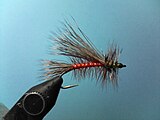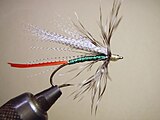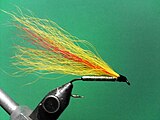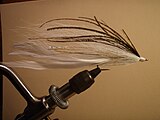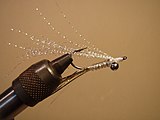
This month I was supposed to have been on a trip exploring Cuvier Island and the Merc’s to complement July’s article on setting up for mother-ship trips.
Unfortunately, Tawhiri (the god of weather) had other ideas and our trip was blown out. The resulting swells were too big to safely launch the kayaks to chase the hapuku and kingfish we wanted, so we’ll rebook and bring the mother-ship story at a later date.
This month I’m also setting up for something at the other end of the spectrum – going solo!
With breaks in the weather, but everyone else tied up at work, I’ll be taking the opportunity to turn the clock back 20 years and head out on several kayak-fishing trips on my lonesome. It’s a unique experience these days to hit the water and be the only kayaker around. But winter is definitely the best time for this, as there’s plenty of room to camp, there’s no other traffic to disturb the fish, and the angling north of the Harbour Bridge is nothing short of superb.
Paddling alone – safety considerations
Kayak fishing is a relatively safe sport, but when going solo a little extra care is required. The key consideration – especially during winter – becomes weather conditions (aside from making sure you have the appropriate paddling skills). Remember, the water is cold, so be conservative; it makes a lot of sense to paddle and fish well within your level of expertise and save the rough stuff for times when others are around to assist. (Besides, it’s fun sharing the thrills with buddies who’re out there enjoying them, too.)The next concern is how to deal with the unlikely event of a roll over. When going it alone, our biggest potential problem is somehow becoming separated from our craft. Ending up over the side might be the result of rough conditions, taking good conditions too lightly (very embarrassing, but it happens!), or as a result of big, unruly fish. Heavy string pullers can drag us in after them or break the line while under pressure, causing us to flip back over the other side of the kayak.
For most of us, the best way to ensure we stay connected with our kayak is to use a good leash system for the paddle and rods. Generally speaking, as kayak anglers we have one or another in our hands most of the time; so long as we don’t let go while tumbling into the water, there’s very little chance of losing contact with our kayak. The key point to remember is that paddle and rod leashes serve two purposes: they keep your equipment attached to the kayak, but can also keep you attached to your kayak. So make sure they’re regularly maintained and inspected for any signs of wear, and replace them as necessary, especially when paddling solo.
Personal tethers are another option that’s been discussed on several occasions in the past. These can be a good option for experienced paddlers with the appropriate buoyancy vests and systems, who are also familiar with the risks of using them (entanglement, especially with other equipment, is an issue that makes it important to know what you’re doing when working with personal tethers). However, for most of us fishing coastal waters recreationally, using leashes on paddles and rods should provide enough security to prevent being separated from our kayak without the need for a personal tether.
Another area worth considering when paddling alone is terminal tackle. When running lures with multiple hooks or trebles, I like to close the barbs; there’s always the risk of a fish flailing free hooks around until they pin nearby flesh or clothing; ‘barbless’ hooks are much easier to extract. I also suggest removing terminal tackle from rods before returning to the beach, eliminating any chance of getting pinned if a tumble is taken while endeavouring to return to dry land.
Another safety pointer to consider involves preparing all baits before heading out on the water. When fishing solo, I’m often staying away from areas where buying bait is possible. At such times I like to convert fresh-caught kahawai, trevally and mackerel into strip or butterfly baits – but choose to do so before launching to minimize any risks with using knives in kayak cockpits. It’s not that I consider it likely I’ll cut myself, it’s just that relatively minor incidents like this take on greater significance when there’s no one else around to lend a hand (for example, a cut finger or hand may make paddling difficult or even impossible).
Communication
To my mind, communication is one of the most important things a solo paddler can put in place; let someone know your intentions, keep them updated, and let them know what to do if you don’t report back by a certain time. After all, while we don’t want to dwell on the negatives of going it alone, it’s also important to minimise the potential risks these adventures entail. This can be very inconvenient, especially when in remote areas, but having someone keeping watch means the alarm will be raised in a timely manner if you can’t initiate it yourself. In part, this is also out of respect for those who may have to come looking for you, with a starting point helping to ensure a rapid and favourable search result.Having a VHF radio will help you to stay in contact with the coastguard and is critical to communicating effectively with other boating traffic in the area. Add a PLB (Personal Locator Beacon) to the mix and you’re doing the best you can to being able to raise the alarm if needed. It’s also a very good idea for solo paddlers to carry a strobe and flares so they can be seen as well as heard.
Let’s go fishing
Okay, enough of the serious stuff, what about the fishing? I start with selecting a ‘relaxed’ launching spot, one where I have easy access to the water and where I’m not confronted with a serious surf transition. Personally, I’d rather paddle a little extra distance from an easy launch area than sweat it getting the kayak to the water, especially if I then have to transition through some rough stuff. Yes, I’m there for an adventure, but I also want to enjoy myself.Northland, Coromandel, the Bay of Plenty, and East Cape all have many spots with good access and shelter from varying wind directions and conditions. This is one of the big advantages of kayaking: our craft are so easy to transport, we can rapidly relocate to find shelter if the weather doesn’t play ball. If prepared to travel, there are few periods where a sheltered area to launch and fish from cannot be found.
In angling terms I find the only real difference between fishing solo and heading out with mates is making sure you have absolutely everything you need before leaving the beach. It’s definitely worthwhile taking a bit more care when preparing, paying particular attention to nets and/or gaffs, as there won’t be anyone to lend a hand with that big one. Nor will there be a mate to sponge tackle off if something important has been left behind. It’s often the ridiculously simple stuff that catches us out: hooks, pre-tied rigs, swivels, clips, jig heads, jigs, rigging tools (like your trusty braid scissors), so check the lot.
Don’t forget the camera!
This is something I’ve been guilty of in the past: having so much fun I forget to take the photos. I then cop it from mates when telling tales of high adventure and big fish, “If it’s not on film, it never happened!” Even if you don’t have a waterproof camera, or one in a dive housing, most of us have a mobile phone in a dry bag capable of taking reasonable images (and you should have it with you anyway as part of your communication kit).Another bit of gear I’ve found invaluable when going solo is a tripod. Having one has enabled me to take many self-portraits with my catch over the years, adding the personal touch to mark successful trips. Tripods range from the little travel models with bendy legs easily carried aboard the kayak to the more traditional extendable-leg models grabbed from the car and set up to record the event afterwards. These offer a greater range of perspective and also make it much easier to collect low-light or flash images.
This is the time to explore new spots; you have the coast to yourself, with clear blue water and big fish (though this time I had my mate Milky there to snap the photos).
Remember to get photos however you can. If out there alone, don’t be shy about flagging down a boat and getting them to snap the shot; most are more than willing, and it’ll give you a chance to show off too.
Remember to get photos however you can. If out there alone, don’t be shy about flagging down a boat and getting them to snap the shot; most are more than willing, and it’ll give you a chance to show off too.
Turning the clock back 20 years to when catching snapper from kayaks was so unheard of no one believed the writer’s success. Here he used the butt end of a fence post to support a camera, in lieu of a tripod.
If your mates reckon it’s too cold, leave them behind and go solo – the rewards speak for themselves.
Paddle and rod leashes: these are more than just a means of keeping equipment attached to the kayak, they also keep your kayak within reach if you end up in the water. Make sure they’re regularly inspected and kept in good condition.
Tripods, cameras and accessories; take the time to get stills and video of solo exploits. After all, ‘if it’s not on film it never happened…’







 A range of headlamps for individual use in a variety of situations, combining convenience and performance.
A range of headlamps for individual use in a variety of situations, combining convenience and performance. 











